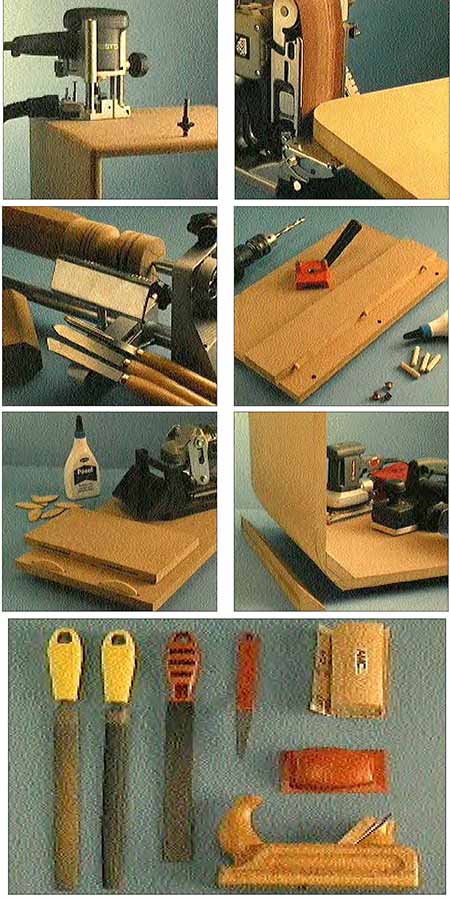 MDF Flat: This is how it is processed – The ideal wood-based material for do-it-yourselfers
MDF Flat: This is how it is processed – The ideal wood-based material for do-it-yourselfers
It has long been standard in the furniture industry, now the MDF board is also becoming a hit with seber makers. We give processing instructions.
In addition to solid wood panels such as glued wood, the complex plywood to be produced, The MDF board has become more expensive plywood and the simple chipboard (Medium density fibreboard) has gained a permanent place in the home improvement workshop. The low price and the easy processing make this plate so popular. Most hardware stores and wood shops have adjusted to this and already offer this material in cut. The MDF board is made entirely of wood. For the production, local softwoods are chipped into the finest fibers and pressed into panels under high pressure with environmentally friendly glue resins. The great advantage of this material is that it has almost the same density on the surface and in the material itself. Edges or millings can be surface treated like the surfaces. Pre-glue, Edge strips or special edge protection are not required. MDF board has no grain and can be sawed, Milling and shaping like solid wood. Because of the relatively high proportion of glue used, power tools should be carbide-tipped.
A computer cabinet, that has it all: The sides with the roller shutter guide are made of MDF. Do you want to recreate it? Order the blueprint.
MDF board has hardly any tendency to tear. Nevertheless, the blade should only protrude a little over the material when sawing. Work at high speed.
The amount of glue and the density of the material mean that carbide tools are also required when inserting fittings. Use the drill stand for safety.
For chamfering, Standard woodworking tools are used for edge rounding and grinding. The material behaves somewhat like softwood.

The material can be milled very well. Despite the carbide tipping of the milling cutter, the feed rate must be carefully controlled. Otherwise the cutter will run hot.
For chamfering, Milling cutters with a stop ring or tenon are suitable for rounding off and profiling the panel edge. They follow the given contour of the edge.
The material stays that way, how it is
Solid wood panels, Blockboard and plywood are not always dimensionally accurate and can change their shape due to external influences. Temperature differences and fluctuations in humidity cause the wood to shrink or grow. The panels can become crooked, and massive boards can bowl. Both very unpleasant features, which have already brought some seer makers to despair.
MDF panels behave differently. They are true to size, that means, one with 19 mm specified plate is also 19 mm dick. Normal fluctuations in ambient temperature and humidity also leave the panel unchanged. Glue joints can no longer burst, Precisely machined parts keep their shape.
MDF parts are glued together, whether butt against each other, with round dowels or with flat dowels, with white glue or, When it should go fast, with express glue. Pressing is the same as when processing solid wood.
Milling, Sawing and grinding.
When processing the material with electric machines, you should always work at the highest possible speed. But that has a disadvantage: the strong dust development. The fine wood fibers, which can be removed cleanly at high speeds, develop a smoke-fine dust, which must be sucked off immediately. All modern milling, Saws and grinders are equipped with suction devices. A workshop vacuum cleaner is also good, in an emergency, a powerful household vacuum cleaner will do it. The fine dust clogs paper filters relatively quickly, frequent cleaning or replacement is therefore necessary. The advantage of the fine, dry chips, that abrasives do not clog as quickly as with other wood-based materials or with solid wood. An abrasive with a finer grain can therefore be used for pre-sanding. Blunt milling cutters or saw blades as well as too strong a feed quickly lead to high friction resistance between metal and wood. Result: high frictional heat, which can lead to scorch marks.
Exactly semicircular edges are created by milling from both sides. Milling cutter radius = half the plate thickness.
Draw the radius for round contours, Pre-cut with a jigsaw and then sand to fit.
MDF parts can also be turned. The material thickness is not sufficient, glue several panels together.
Corner connections are made in the same way as with other sheet material. The classic corner is created using dowels.

Corners with flat dowels are faster to manufacture and even more durable. A special milling machine is required for this.
There is a trick for corners with a large radius. Glue in the corner block, Saw off the tip, planing and grinding.
Rounding and chamfering – Since the edges of the MDF board can be painted without any further pretreatment, they can also be rounded or chamfered beforehand. This can be done quickly and easily with the router or by hand with a plane, Error, Shape sander and sandpaper with block.